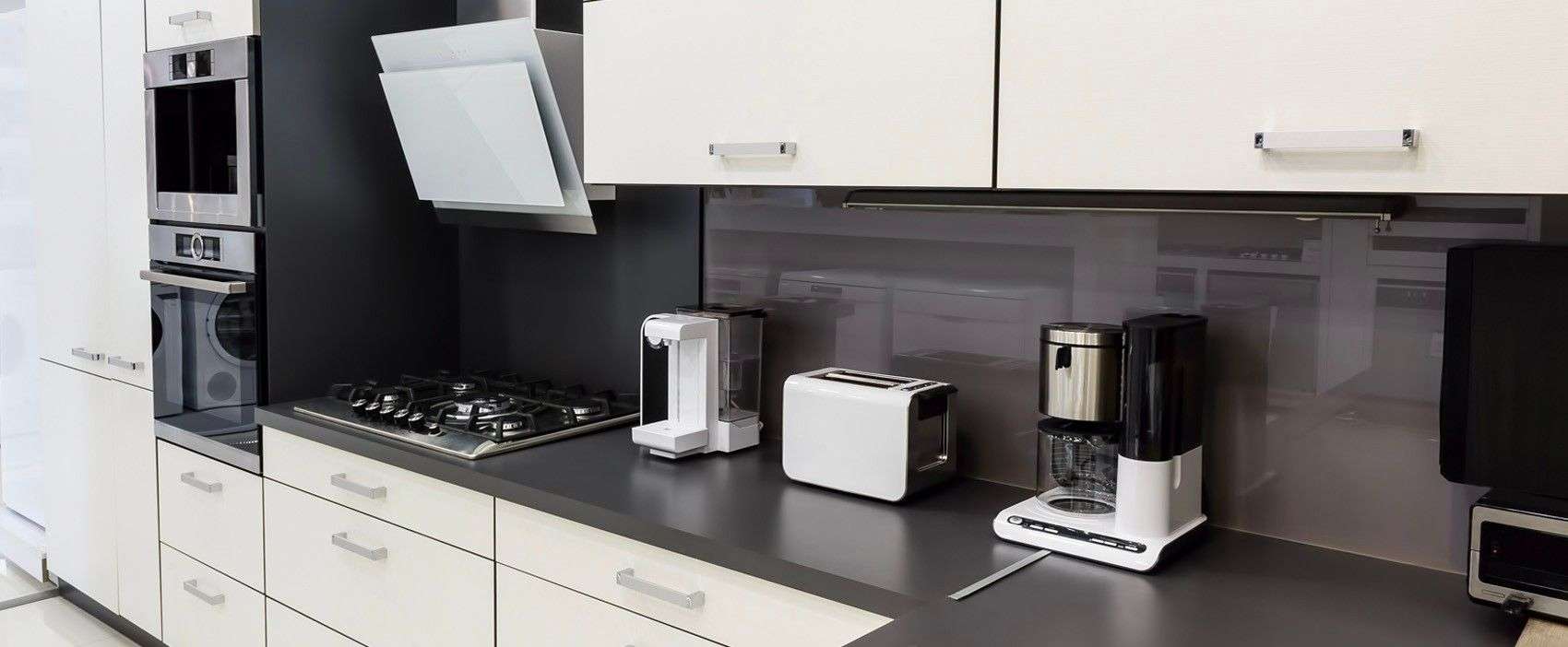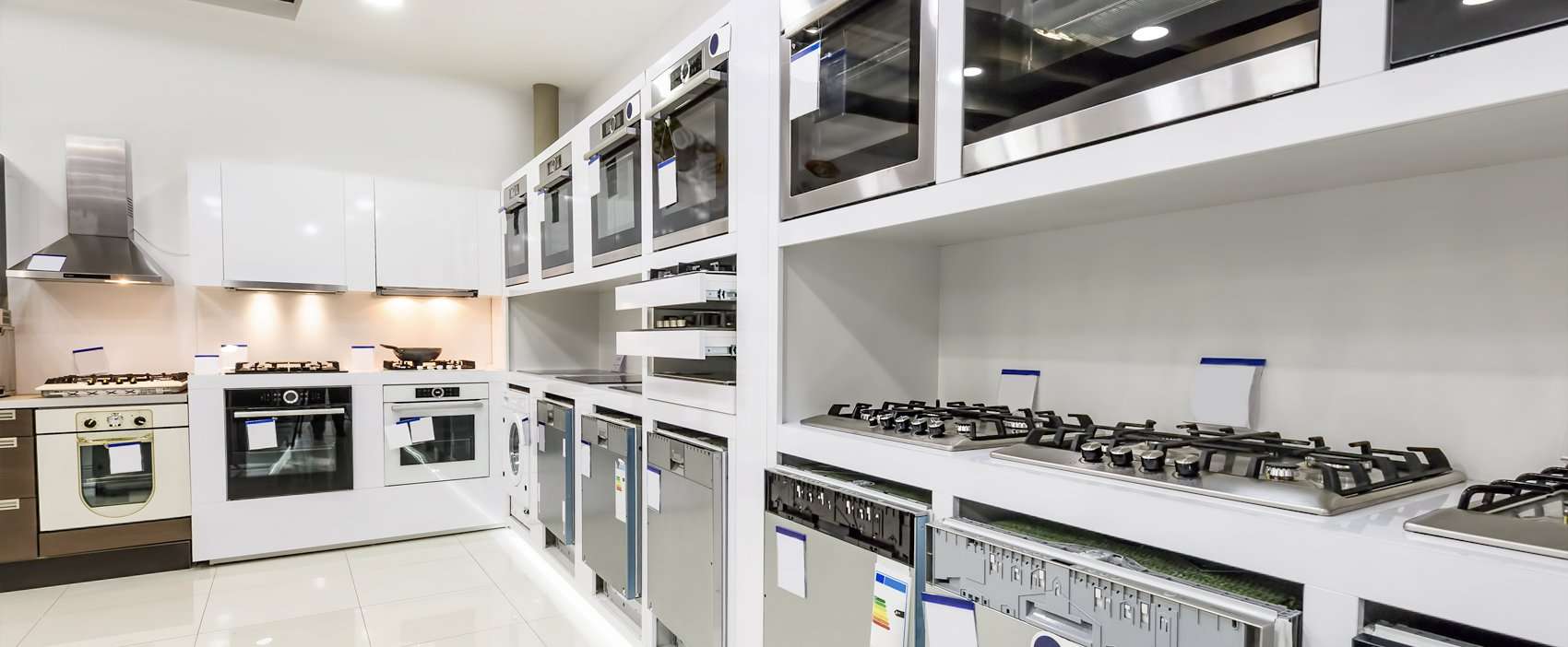Parkergale Capital Establishes New AI-Fueled Market Intelligence Platform With Combination of Gap Intelligence and Deep.Ad
ParkerGale Capital, a Chicago-based private equity firm that specializes in investing in and growing profitable software companies, is excited to announce it has completed its investment in the market intelligence space by acquiring Gap Intelligence and Deep.ad.
Gap Intelligence, a market intelligence provider to OEMs, and Deep.ad, an innovative, AI-powered market intelligence software company, represent the first of what is hoped to be additional acquisitions in the market intelligence space. ParkerGale plans to work with the combined entity to build out its product offerings and enhance them with the power of AI.
The combination of Gap Intelligence and Deep.ad will give customers access to one of the most robust sources of real-time market intelligence available today. Gap Intelligence’s market leading omni channel pricing, promotion, placement, and product data collection practices along with Deep.ad’s AI fueled library of real-time cross-channel digital paid and earned media data will create a truly unique product, tailor-made for marketing, product, sales, social, and customer insights teams who want to know not only how their products are performing, but why.
As an example, Gap Intelligence and Deep.ad will come together to provide the insights that help leading manufacturers execute multi-channel marketing campaigns covering the entire customer journey. Campaign activities typically include social media promotions, interactive experiences, and retail strategies for omnichannel promotions and advertisements - all designed to boost sales. To ensure a comprehensive evaluation of a campaign’s performance, top-of-funnel marketing activities can be tracked in real-time and evaluated in Deep.ad’s multichannel ad placements data, while bottom-of-funnel efforts can be analyzed with Gap Intelligence’s omnichannel 4P’s data and expert analysis, all while monitoring competitors’ actions during the campaign.
As part of the transaction, the combined company will be led by Greg Munves as CEO. Before joining Gap Intelligence, Mr. Munves spent more than 15 years at 1010data, ultimately becoming the company’s CEO and leading it through a successful sale to Advance/Newhouse in 2015. Kris Kubicki, the founder of Deep.ad, will also join the combined company as CTO, and will play a pivotal role in injecting Deep.ad’s AI and machine-learning capabilities into Gap Intelligence’s products. The company is looking to add additional offerings and verticals both organically and through acquisitions.
Mr. Munves expressed his enthusiasm for the acquisition, stating, "When our investors approached me to lead the combination of Gap Intelligence and Deep.ad, I immediately knew it was the right fit. I've spent most of my professional life creating data analytics and market intelligence products. At 1010data, I saw how timely access to better information can reshape how work gets done and industries get redefined. I see the same potential here at Gap Intelligence. Brands lack a cohesive persona-driven analytical operating system to make informed real-time decisions to help them understand competitive pressures and to ultimately win market share. I truly believe I'm joining a company who can give brands an unfair data advantage and help them win more consistently in their markets. And I’m excited about the potential I see in our AI strategy to deliver timely insights, as well as how quickly we plan on integrating what Kris and the Deep.ad team have built into the Gap Intelligence platform to help customers get a clear picture of their share of voice across digital media channels.”
Ryan Milligan, who led the investment for ParkerGale, shared his perspective on this collaboration, saying, "This combination of Deep.ad and Gap Intelligence is the start of something special. We’ve believed in the market potential of market insights data products for a long time. And now by applying Deep.ad’s cross-channel paid and earned digital media data and their AI and machine-learning capabilities to an already robust set of data inside Gap Intelligence’s products, we think we can unlock even more insights for our customers, helping them make more-informed decisions about how they win market share. This also won’t be the last acquisition we complete as part of this platform - and with Greg and Kris onboard, we can build our M&A strategy more confidently knowing we have a leadership team that can help us evaluate, integrate, and unlock the value within future acquisitions.”
Gap Intelligence was exclusively represented by Persient LLC in its sale.
About Gap Intelligence
Gap Intelligence, founded in 2003, is one of the world’s most respected business intelligence services companies. Gap’s data and market research products give manufacturers, resellers and industry players a competitive edge in IT, consumer electronics, and home appliances industries, and helps marketing, product, sales, and pricing teams make more informed decisions and stay competitive in a rapidly changing market environment. www.gapintelligence.com
About Deep.ad
Founded by Kristopher Kubicki in 2017, Deep.ad provides brand attribution and market intelligence software for brands, agencies, and market research organizations. Deep.ad’s solutions automate the discovery and extraction of brand, product, and advertising data and insight in paid and organic digital media. Using Machine Learning, Deep.ad can detect, classify, and measure appearances of placements – logos, trademarks, products, offers, and text – within visual media and digital content, bringing Ad Tech practices and scale to emerging media channels and giving agencies and brands the data they need to identify, analyze, and engage with visual content that features brand mentions and appearances. www.deep.ad
About ParkerGale
Capital ParkerGale Capital is a private equity firm based in Chicago that invests in small, profitable software companies where the firm's operating resources can have a meaningful impact on the outcome. www.parkergale.com
Bath Fixtures Industry Trends: 2022 Market Share & Statistics [Infographic]
In this article, we analyze a snapshot of time within the bath fixtures market. Through the analysis of bathroom fixtures market share and consumer insights data from 2022, we determine the top brands and retailers, as well as other significant consumer insights.
Read on to find out what brands consumers are buying most, where they are buying them, and what drives purchase decisions. For even more insights, download our free bath fixtures market rankings infographic.
All insights were pulled from the Durable IQ market insights platform. For the purpose of this article, we looked at a rolling four quarters period ending December 2022 within the US Bath fixtures category.

Who are the market share leaders for bath fixtures?
Bathroom Fixtures Market Share by Retailer
In 2022, the leading retailer for bathroom fixtures in the US was The Home Depot with 32% market share for units sold, about 7 percentage points higher than the next closest retailer. This continues a 10+ year streak for the company. The next closest outlet was Lowe’s with 25% market share, a 2-percentage point decrease year-over-year.
The Home Depot and Lowe’s were also the leading retailers in 2022 by dollar share.
Bathroom Fixtures Market Share by Brand
What are the best bathroom fixture brands?
The leading brands for bathroom fixtures differ by unit and dollar share.
Looking at most units sold, the leading brand for bathroom fixtures in 2022 was Moen, with 17% share.
For brand dollar share, Kohler (22%) was significantly higher than all other brands, while Moen came in as the second-place winner with a dollar share of 16%. Notably, while Moen’s dollar share was up significantly from the same time last year (up 2 percentage points), Kohler remained flat.
Is Moen or Delta better?
Based on 2022 market data, Moen is the more popular brand, winning the most consumers in both units sold and dollar share. Moen enjoyed 16% dollar share, while Delta won only 13% — a 1 percentage point decrease year-over-year. In units sold, Moen earned 17% of the market, while Delta saw another 1 percentage point decrease compared to the prior year, at only 14.5%
How much are consumers typically spending on small home appliances?
The industry average when purchasing Bathroom Fixtures in 2022 was $109 – consumers reported about the same for the previous year. Prices paid at Home Depot and Lowe’s were close to this industry average. The Home Depot’s was $115 and Lowe’s was $110.
However, those purchasing through a contractor continued to show the highest average price paid (at $266) – which was significantly higher than all other outlets.
Comparatively, shoppers who purchased bathroom fixtures at Walmart enjoyed an average price paid that was significantly lower than other outlets (about $37).
What consumer demographic buys the most bathroom fixtures?
In 2022...
- 38% of bathroom fixtures were purchased by women alone.
- 32% of purchase decisions on fixtures for bathrooms are made by only men
- 84% of purchases for new bathroom fixtures are made by homeowners
- Two-thirds of bathroom fixture buyers lived at their current residence for 5+ years
Other key bathroom fixture market insights
Durable IQ delivers a comprehensive view of the kitchen and bath market — from share insights to purchase drivers. Here are a few other key insights on the bathroom fixtures market:
Online sales: About 25% of bathroom purchases were made through an online channel.
Number of outlets shopped: Across the industry, 67% of purchasers only shopped at one outlet before purchasing. Shoppers at Walmart show the highest incidence of being drawn and closed with no other stores shopped in the process — with 73% of Walmart purchasers shopping at only Walmart.
Purchase drivers:
- Across all outlets, the two most important reasons for purchasing bathroom fixtures at a chosen outlet was “competitive price” and “good selection of products.”
- Amazon purchasers mention “competitive price” as the main reason for outlet choice, coming in at about 20 percentage points higher than all other outlets.
- For those purchasing at Walmart, “already in store buying other items” was also a much more important reason than at other outlets.
Get total market insight for bathroom fixtures
For more insights on the bathroom fixtures market, download the TraQline-exclusive infographic below. To see the insights for other industries or find out how we can help power growth for your business, contact us today.
Uncovering Competitor Strategies: The Power of Competitive Analysis in Product Development
The success of a new product is critically dependent on whether there is a market for it.
Each year, about 30,000 new products become available to consumers — and an estimated 95 percent of those new products fail.
Understanding which products succeed (and why!) is therefore as essential to the product development process as a strong, market-driven product idea — which is where competitive analysis comes in.
What is Competitive Analysis?
An inherently powerful tool, competitive analysis for product development comes down to researching the key players in your space to gain insight into how they operate, the ways they are meeting market demand, where they are winning and losing — and then determining how you can best position your development process by using this data to your advantage.
Benefits of Competitive Analysis in Product Development
Effective competitive analysis can make or break the launch of a new product because it allows you to uncover your competitors' strategies and prepare your business to defend against competitive threats in the market after launch. Further, for a product to do well on the market, you must give your audience a reason to choose it over similar items.
Product-based market research allows you to:
- Identify market trends. The data collected in a competitive product analysis can help forecast future market trends to ensure your product stays on top during shifts.
- Understand competitors’ strengths and weaknesses. Knowing where your competitors are weak can help you avoid what does not work and in turn build a better product design overall. This also applies when developing your marketing strategies.
- Optimize your product design for the customer experience. Understanding any potential problems that exist in the target market for similar products allows you to adjust your brands in order to create more effective solutions.
- Answer key competitive questions. What products do they produce, and what is their overall success rate? How do they rank in the market? What are their strengths, and where do they fall short? Where are the opportunities for your brand and product(s) to gain an advantage?
Methods and Tools for Competitive Product Analysis
Various methods can help you conduct a thorough analysis. While all the methods below can be completed with ease and efficiency through a market insights solution like TraQline, let us break down three different concepts: market research, SWOT analyses, and competitor benchmarking.
Market Research for Product Development
When you are diving into new product development, market research is critical in helping identify opportunities and determine whether the market can support your product concept.
As a quick overview, you can break down market research into four categories:
- Quantitative – Focuses on what is measurable, such as how many people would be interested in the product and the average amount they might be willing to spend
- Qualitative – Takes the quantitative numbers and gives them meaning. Why would consumers buy this product?
- Primary – Analyzes raw data directly from customers
- Secondary – Analyzes existing data from the market and competitors
One of the most challenging parts of market research is knowing how to collect data. What tools will you use for primary research? Surveys, questionnaires, or focus groups are some options. You can also look at social media comments and read reviews for secondary research.
Today, there are plenty of technology-based tools that package and deliver market research data into digestible and interactive dashboards for product developers and other business functions. These tools, like TraQline, all have proven methods of collecting and analyzing this data — methodically taking the guesswork out of deciphering the market.
SWOT Analysis: Better Understand Competitor Products
A strong SWOT analysis will give you an overview of how your product compares to others on the market.
SWOT is an acronym for strengths, weaknesses, opportunities, and threats. It is a type of market research that involves building a framework to evaluate your competitive position using a fact-based, data-driven system. A SWOT analysis consists of a four-quadrant table. Each quadrant represents an element of the analysis.
When reviewing each element, consider both internal and external factors. Internal factors might include operational efficiencies. External factors might include supply issues and market changes.
Questions you should ask during a SWOT analysis include:
- Strengths – What are the differences between our product and others? In what way is our product superior?
- Weaknesses – What is the competition doing better? Where do we need to strengthen our products, strategy, or pricing?
- Opportunities – Are there demographics we are missing when considering product development? Are there features that are on the rise that we have yet to implement?
- Threats– Is the market too saturated for this type of product? Does a particular competitor have an impenetrable hold on one segment of the market?
Competitor Benchmarking
Competitor benchmarking involves comparing your product with other offerings on the market and is an integral extension of any market research or SWOT analysis. You will take a closer look at the competition to evaluate their business and product development strategies and determine how their approaches are better or worse than yours.
When benchmarking, you want to answer key questions, such as:
- What does their product offer consumers?
- How much does their product cost?
- What is the current market share?
You'll also want to complete informative tasks, such as:
- Compare the top similar products and note any differences between them. What does one do that the other doesn't?
- Research the top brands to see if consumers trust them and why.
- Look at the marketing for top-selling products. What has been effective? What isn't working?
- What features might you add to your product that consumers need?
- How often do the brands update their products?
TraQline Market Insights Solutions: Your Answer to Actionable & Streamlined Competitive Analysis
Without conducting a competitive product analysis, you run the risk of launching a new product that fails to meet consumer demand or deliver any market advantage for your business.
If you’re in the consumer durables space, you can tackle competitive analysis with ease and efficiency with TraQline at your fingertips. Our market insights solutions are designed to give you a clear and comprehensive view of your market — helping you better understand your competitors' product strategies so you can be better positioned to improve yours.
Get the data you need to increase your competitive advantage, find new opportunities, and build products that align with market demand.
Make better informed product development decisions.
Inquire to see how TraQline can help.
TraQline Adds New VP of Product Management and Head of IT and Operations
Chad Pinkston and Charlie Harris bring decades of experience to spearhead a new wave of data innovation for the durable goods industry
Louisville, KY – July 20, 2023 /EINNewswire/ TraQline, a leading market data and insights company, today announced the appointments of Charlie Harris as head of IT and operations and Chad Pinkston as vice president of product management. In their new roles, Pinkston and Harris will focus on driving innovation in order to better serve the durable goods industry through unmatched market, consumer and SKU data.
Harris steps into his new role with over 30 years of experience building agile teams focused on efficient software design, development, implementation, and support of data insights solutions. Prior to TraQline, Harris served as a partner at The Beyond Store, the director of software engineering at LexisNexis Risk Solutions, and as vice president of software development at Appriss. At TraQline, Harris will work to design and develop innovative technologies to address complex data driven challenges, as well as enhance TraQline’s offerings to exceed the level of quality and consistency that clients expect.
Pinkston brings 20 years of experience successfully identifying opportunities to drive revenue and creatively capitalizing on new markets, having previously served as vice president of partnerships at Farm Credit Mid-America, as director of product and engineering at CafePress, and as director of business development at Appriss. In his new role, Pinkston will be focused on developing new products and bringing them from concept to market while furthering TraQline’s integration of advanced technologies such as artificial intelligence.
“We are excited to have Chad and Charlie join the deep bench of talent that we have in place at TraQline,” said Dave Stevenson, CEO of TraQline’s parent company, The Stevenson Company. “Our data-focused products and technology require extreme precision and accuracy, not to mention operational efficiency and ease of availability – and we are cultivating the talent in design, delivery, and operations to support and further elevate these products. Chad and Charlie will play a vital role driving the next level of innovation for TraQline, readying our company to serve the durable goods industry better than ever through new and expanded data and analytics tools.”
The appointments follow TraQline’s recent announcement of its new brand identity for its flagship product, Durable IQ. Over the past 20 years, the company has built an innovative suite of insights solutions for the consumer durables sector. With over 600,000 consumers surveyed every year, and thousands of SKU-level data points ingested, the company's analytics cover all industry brands and retailers, delivering 100% market coverage for over 250 product categories. Through this reliable and comprehensive market data, TraQline empowers users to make informed decisions about product development, marketing, and sales strategies within the industry.
“With the rapid growth of AI and automation, it is crucial for businesses to be able to properly integrate these new tools in a way that informs and meets their goals,” said Harris. “I’m looking forward to being part of an innovative team to ensure TraQline delivers the best possible data and solutions for its customers.”
“TraQline is an established industry leader that excels at addressing many of its customers’ most challenging problems – such as obtaining good, quality data in the durable goods space,” said Pinkston. “The company is well positioned to bring even more efficient and effective insights to this industry, and I’m excited to help drive new innovations and data capabilities to revolutionize this space.”
About TraQline
TraQline is the leading provider of modern market data solutions for the consumer durables industry. Powered by an innovative suite of solutions, TraQline delivers unparalleled insight into consumer behavior, preferences, and trends across a range of industries, including home appliances, home improvement, consumer electronics, and more. Trusted by businesses for more than 28 years, the company's comprehensive state-of-the-art data and analytics tools help users make informed decisions to drive growth in their business, inspire new advancements in product development, and develop impactful, efficient, and effective marketing and sales strategies. For more information, please visit TraQline.com.
Connect with us to learn more about our market insights solutions
US Small Appliance Industry: Best Brands & Retailers, Market Share & Industry Trends [2022 Infographic]
In this article, we analyze a snapshot of time within the small appliance market. Through the analysis of small appliance market share and consumer insights data from 2022, we determine the top brands and retailers in the small appliance industry, as well as other significant consumer insights.
Read on to find out what small home appliance brands consumers are buying most, where they are buying them, and what drives purchase decisions. For even more insights, download our free small appliances market rankings infographic.
All insights were pulled from the Durable IQ market insights platform. For the purpose of this article, we looked at a rolling four quarters period ending December 2022 within the US Small Appliances category. Contact us for further breakdowns of the data, or to understand the full scope of insights available through TraQline as well as the most recent major appliances market data.

Who are the small home appliance market share leaders?
Small Appliance Market Share by Retailer: Walmart vs. Amazon
At the end of Q4 2022, the leading retailers in the small appliance market were Walmart and Amazon — both by units sold and dollar share. Let’s dive into the insights and trends.
In units sold, Walmart continued to hold their long-running position (for 10+ years) as the top small appliance retailer, winning nearly 32% market share. This landed Walmart 9 percentage points ahead of Amazon, the next closest outlet.
Notably, while Walmart is mostly flat compared to 2021, Amazon continued a multi-year trend of significant growth year-over-year, winning nearly 25% of the market — a 1-percentage point increase from 2021.
This same year-over-year growth trend for Amazon is also seen when looking at small appliance dollar share winners.
While both Walmart and Amazon saw significant dollar share growth year-over-year, Amazon leads at nearly 25% market share (with Walmart close behind at 22% dollar share). In fact, Amazon has seen significantly higher increases each year over the past decade — outselling Walmart for the first time in 2021 and holding this leading position, with continued growth, ever since.
Best small appliance brands with the greatest market share
The best small appliance brands, according to market share data, are Bissell (at 7% share by units sold), SharkNinja, and Dyson. Bissel continues a 6-year run as the leading brand, despite a 1-point decrease year-over-year. SharkNinja and Dyson, on the other hand, both saw significant increases in 2022.
In dollar share, the top brands remain the same, however Dyson leads at 17.4% share – a 2-point increase year-over-year. SharkNinja holds the second highest market share for consumer dollars, and Bissel the third.
Unsurprisingly, the top sold product in 2022 for each of the top 3 small appliance brands was vacuum cleaners.
How much are consumers typically spending on small home appliances?
The average price paid within the small appliance industry is $102 – which is about the same as it was at year-end 2021. This includes a high of $221 average price paid at Best Buy, and a low average price paid of $72 at Walmart.
How are online sales trending for the small appliance market?
In 2022, nearly 40% of all small appliances were purchased online, which is only slightly up from year-end 2021.
What consumer demographic buys the most small appliances?
Using our census-balanced data, Durable IQ paints a picture of the typical small appliance consumer. The most common demographics include:
- 68% of all small appliance purchases involve a woman in the decision process, with 53% of small appliance purchases made by women alone
- 62% of small appliance purchasers own their home
- 50% of small appliance consumers have lived at their current address for 5+ years
What are the top drivers for small appliance purchases?
Overall, the top two reasons consumers choose to purchase a new small appliance are 1) to replace a broken one or 2) as a first-time purchase.
When choosing a particular retailer to purchase from, the most important reasons are consistently, year-over-year, “competitive price” and “good selection of products.”
Our leading retailers, Amazon and Walmart, both over-index for these attributes — likely a major factor in the higher unit shares they see year after year over other retailers.
Get total market insight for small appliances
Download our infographic below to broaden your understanding of the small appliance market with even more actionable insights into the industry. To get access to the most recent market data available or discover the full scope of our small appliance intelligence, contact us using the form below.
Download our Small Appliances Market Rankings Infographic
US Furniture Industry Trends: 2022 Market Share & Statistics [Report]
Durable IQ delivers the insights you need to understand who’s buying furniture, where they are buying it, and why. If you are looking for more than market share data for the US furniture industry – you are in the right spot.
Read on to find out what furniture brands consumers are buying most, where they are buying them, and what drives their purchase decisions. For even more insights, download our free US furniture market rankings infographic.
For the purpose of this article, all data insights were pulled from the TraQline platform using the rolling four quarters period ending December 2022, looking at the US Total Furniture category. Contact us for the most recent recent furniture market data, further breakdowns of the data, or to understand the full scope of insights available through TraQline.

Who leads market share in the furniture industry?
Furniture Market Share by Retailer — by units sold
At the end of Q4 2022, Amazon continued to lead other outlets in units sold, with 19% share, which marks a significant increase for the company’s share year-over-year — coming in at just over 1 percentage point higher.
The increase in Amazon’s unit share continues as an upward trend seen in the last several years. In fact, Amazon’s unit share is 10 points higher than the next closest outlet — Walmart at 9% share.
This 10-point share difference over Walmart is the largest seen since Amazon became the share leader in December 2019 (4QE).
Furniture Market Share by Retailer — by dollar share
The outlet leader in dollar share is Ashley Furniture, at 11% share, reigning a whole 4 points higher than the next highest outlet — Amazon at 7%. Despite this win in the market, dollar share for Ashley Furniture is down about 1 point versus a year ago.
Furniture Market Share by Brand
Ashley Furniture is not only a share-leading retailer — the company also leads the market in both brand unit share and brand dollar share. While the company’s 9% brand unit share was followed closely by IKEA at 8% market share, Ashley Furniture’s 16% brand dollar share continued to dominate the market. The next closest brand came in at only 5% share, which was earned by La-Z-Boy.
Online Furniture Market Share
With almost half (49%) of all furniture purchases in 2022 made online, it is critical to keep track of online sales trends. Compared to 2021, the percentage of furniture purchases made online is up from 48%.
Of those furniture sales, the retailers with the highest online conversions unsurprisingly went to the ecommerce powerhouses Amazon and Wayfair – at 75% and 59% respectively. On the flipside, the highest in-store conversions were seen by Rooms to Go and Ashley Furniture — at 29% and 19% respectively.
How much do consumers spend on furniture?
When purchasing furniture in the US, the average price paid is $779 across the industry. This industry average is up 13% compared to last year’s average price ($690).
Notably, the average amount spent at different retailers and by brand can vary. As one interesting example, while Ashley Furniture is leading in market share by unit as both retailer and brand, the company is also over-indexing when compared to the industry on average amount spent. Consumers purchasing from Ashley Furniture spend an average of $1,472 — nearly twice as much as the industry.
Meanwhile, average spending fell below the industry average price paid for other outlets like Amazon (share leader by units sold) and Wayfair.
Another noteworthy callout, while the average price paid by brand was higher among those purchasing La-Z-Boy ($1,579) versus Ashley Furniture ($1,462) both brands are much lower in sales volume compared to other brands.
Who buys the most furniture?
Using our census-balanced data, Durable IQ delivers purchase insights that paint a picture of the typical furniture buyer in the US.
What are the most common demographics of someone looking to buy furniture?
Based on Q4 2022 data…
- 51% of all furniture purchases are made by women alone; and another 29% of purchases involve both a male and a female
- About 38% of furniture purchasers have lived at their current address for 5+ years
- Nearly 70% of purchasers do not have children in the household — where 46% have two adults with no children in residence, and 24% are single adult households.
- While more than half (58%) of all purchasers own their home, those purchasing Furniture at Walmart and Target are less likely to be homeowners (57% and 55% respectively).
What are the top purchase drivers for furniture sales?
As reported right from the consumers themselves, the most important reasons for purchasing furniture at a particular outlet are “competitive price” (60%) and “good selection of products” (46%).
Download the US Furniture Industry Trends report for even more insights
Durable IQ delivers countless other consumer behavior insights and industry trends for the US furniture market — and beyond. To see the rest of our infographic insights, download the Durable IQ Furniture insights report below.
Download our US Furniture
Industry trends report
TraQline Renames its Flagship Market Share and Consumer Insights Data Solution "Durable IQ"
Durable IQ name reflects company's focus on innovation and providing unparalleled intelligence for consumer durables industry
LOUISVILLE, Ky., June 6, 2023 /PRNewswire/ -- TraQline, the preeminent provider of consumer insights and innovative market research solutions for the durable goods industry, today announced a new brand identity for its flagship product. Formerly known as TraQline, the trusted market data and consumer insights resource for durables market intelligence is now Durable IQ™.
This rebrand reflects the growth and evolution of the Durable IQ product, as well as the company's peerless focus on continued innovation to provide best-in-class data and insights for the durable goods industry.
"Building on our strong foundation in market research and consumer behavior measurement, we're excited to launch the next stage of our company's evolution with Durable IQ," said Dave Stevenson, CEO of TraQline's parent company, The Stevenson Company. "As we continue to innovate on our market intelligence tools, we hope to further our users' understanding of the consumer durables industry. We look forward to strengthening our position as a leading provider of the most robust and accurate data solutions while continuously delivering new innovations, products, enhancements and features under the TraQline brand."
Over the past 20 years, TraQline (now Durable IQ) has grown into a complete data solution for the consumer durables sector, with over 600,000 consumers surveyed every year. The company's analytics cover over 170 product categories and more than 2,500 brands across 1,000+ outlets to achieve 100% market coverage. In addition, Durable IQ measures key growth KPIs such as market share, pricing, demographics and online vs. brick-and-mortar sales.
Some key insights from 2022 include:
- Home Depot was the number one retailer across 4 of the top 10 consumer durables product categories 2022; Walmart was number one for 3 product categories.
- Top brands like Samsung, Moen and Peloton lead sales in their respective categories.
- Online sales continued to grow in 2022 with an 8-point increase since 2018 – with the largest online sales increase still holding from 2019 to 2020.
- Amazon's consumer durables share grew 5 percentage points since 2018.
- Sports equipment had the highest percentage of sales made online versus in-store (66% of the total), exceeding even consumer electronics (45%) and cellphones (34%).
- Major appliances had the highest average price paid across key consumer durables in 2022, with wall ovens the highest within the product category.
- Cell phone and consumer electronic purchases tend to have lower income purchasers versus sports equipment whose consumers had higher income.
Under the new name, Durable IQ will continue to the deliver reliable and comprehensive consumer data that users have come to expect from TraQline, empowering them to make informed decisions about product development, marketing and sales strategies within the industry.
This change also positions TraQline as an all-encompassing brand that comprises a full suite of innovative and complementary durable goods insights solutions including Durable IQ, SKU Metrix™ and Hybrid POS™, which together deliver a toolkit providing unparalleled total market insight for marketers, merchandisers and executives.
SKU Metrix and Hybrid POS provide a deeper, more nuanced look into specific industries and categories through SKU-level data — delivering depth of detail to match Durable IQ's breadth of coverage. Through SKU Metrix, users can access a regularly updated product master that allows for easy comparison of 27,000+ SKUs, including pricing intelligence, availability information, features and more. With Hybrid POS, the SKU intelligence goes even further, showing the top-selling SKUs and SKU share for the nation's leading retailers.
About TraQline
TraQline is the leading provider of modern market data solutions for the consumer durables industry. Powered by an innovative suite of solutions, TraQline delivers unparalleled insight into consumer behavior, preferences, and trends across a range of industries, including home appliances, home improvement, consumer electronics, and more. Trusted by businesses for more than 28 years, the company's comprehensive state-of-the-art data and analytics tools help users make informed decisions to drive growth in their business, inspire new advancements in product development, and develop impactful, efficient, and effective marketing and sales strategies. For more information, please visit TraQline.com.
Connect with us to learn more about our market insights solutions
3 Reasons Major Appliance Data is Better Without Retailer Participation
When it comes to the data accessible to brands and retailers for optimizing sales, there has never been more available than today. Traditionally, the ideal POS model involved point-of-sale terminals batching information down to the minute. However, from transmission errors to retailer opt-outs, the flaws of traditional major appliance SKU data quickly became irrefutable.
This error paved the way for a new kind of data system—detailed tracking of the omnichannel consumer without reliance on retailer participation. As the landscape of SKU data became challenging to navigate, TraQline HPOS™ made it simple again. Let’s unpack three reasons major appliance data is better without retailer participation.
Benefit 1: Consistency in Participation
In retailer-dependent data systems, any retailer may opt out of participation at any time. This issue requires tedious projection and recalibration while negatively affecting the quality of SKU-level insights.
More retailer coverage equates to more accurate market insights. Naturally, because a lack of retailer participation can narrow the scope of data, the resulting insights can be less actionable. TraQline HPOS can provide a consistent/reliable data product at the SKU level by offering insights independent of retailer participation.
Benefit 2: Wider Major Appliance Market Coverage
As mentioned above, retailers can opt out of traditional POS systems at any point. These systems can be a hassle for retailers—with little (if any) incentive to participate.
Notably, there are some legal caveats. They must sign a complicated contract with the data aggregator and potentially update their privacy policy—and take the time to upload their sales data regularly. So, it is easy to understand why many retailers choose not to participate. For every retailer that opts out, the scope of market coverage shrinks.
Additionally, typical point-of-sale models involve collecting sales feeds from retailers. Each night, the retailers upload their receipt data. Then, an aggregator will compile that information, normalize it, and make it available to their customers. Because the TraQline system does not rely on retailers to provide their information, there is no risk of transmission errors by the retailer or waiting on data often a result of transmission lags. Collectively, this process leads to broader market coverage with more accurate insights.
Benefit 3: No Need to Mask Data
The power of your data applies in its ability to inform your merchandising decisions, internal discussions, and action plans. However, private label or derivative insights come with a catch. You must piece together your paid data without all the information you need to arrive at a clear picture. As such, masking data can leave you lagging behind the latest trends.
Conversely, independence from retailer participation can have the opposite effect. You can get the first glimpse at trends as they emerge from the largest brands and retailers in the industry—keeping you several strides ahead of your competitors.
How TraQline HPOS™ Provides Independent Major Appliance Data
So, you might be wondering, “How is independent data possible?” It requires a sophisticated network of in-house technology, an advanced system of organizing and normalizing insights, and connections with the largest retailers in the industry.
While we can’t give away all of our secrets, you won’t be surprised to learn that TraQline HPOS leverages data from our in-house consumer surveys, the resulting consumer behavior insights, advanced data modeling, and other cutting-edge TraQline technology. We are also built on a team of industry-leading market research professionals, data scientists, market analysts, and economists who lend their unmatched experience and expertise to this tool.
Accurate Major Appliance Market Data: TraQline HPOS™
As the frontrunner in major appliance SKU data, TraQline provides the highest level of service to leading businesses across the industry. We help brands and retailers like yours gain share, crush their competitors, and advance toward the future with confidence. Contact our experts today to learn how we can help you dominate within the major appliance market.
Connect with us to see Hybrid POS in action
US Major Appliance Industry: 2022 Market Share Trends & Rankings [Infographic]
In this article, we analyze a snapshot in time of the major appliance market. Through the analysis of major appliance market share and consumer insights data from 2022, we determine the top brands and retailers in the major appliance industry, as well as other significant consumer insights.
Read on to find out what major appliance brands consumers are buying most, where they are buying them, and what drives their purchase decisions. For even more insights, download our free major appliances market rankings infographic.
For the purpose of this article, all data insights were pulled from the TraQline platform using the rolling four quarters period ending December 2022, looking at the Total US Major Core Appliances category. Contact us for the most recent major appliances market data, further breakdowns of the data, or to understand the full scope of insights available through TraQline.

Who are the leaders in major appliance market share?
Major Appliance Market Share by Retailer
At the end of Q4 2022, Lowe’s continued to lead the core major appliances market with the highest market share percentage (28%), based on units sold. The second highest share was held by The Home Depot, who claimed 23% of the core major appliances market. Notably, both Lowe’s and The Home Depot were up significantly year-over-year.
Major Appliance Market Share by Brand
The top brand in major appliances continues to be Samsung, who saw a steady upward trend in recent years. At the end of Q4 2022, the brand leader held 19% of the major appliances market, based on units sold.
The brand with the second highest share was GE, who enjoyed a 17% share of the major appliances market.
More Than Market Share: Other Notable Retailer & Brand Insights
Go beyond major appliance market share with TraQline. Get retailer and brand data that include insights like outlets shopped, purchase drivers, and more.
Outlets Shopped: Across the major appliance industry, 53% of purchasers only shopped at one outlet before purchase! However, consumers shopping at Amazon and Sears are much more likely than the industry average to shop at only one outlet before purchase (62% and 60%, respectively).
Purchase Drivers: For major appliance consumers, the most important reasons for purchasing at a particular outlet is “competitive price” and “good selection of products.” For brands, a key motivation for purchasing one brand over another is “competitive price.”
How much do consumers spend on major appliances?
Across the industry, the average price paid for major appliances was $946. However, the average amount spent typically varies by brand and retailer. Let’s dive into two examples:
For consumers buying major appliances at Amazon, they enjoyed the lowest average price paid, coming in at only $742 — significantly lower than the industry average!
On the other hand, for those purchasing at Lowe’s – the retailer we noted as leading in market share – they paid closer to the industry standard, averaging $929.
Which consumer demographic buys the most major appliances?
Using our census-balanced data, TraQline delivers purchase insights that paint a picture of the typical durable goods consumer.
What are the most common traits of someone looking to purchase a major appliance?
Based on Q4 2022 data…
- 36% (that’s a little over a third!) of all major appliance purchases are made by both a man and a woman together
- 77% of major appliance purchasers own their own home
- 59% of consumers buying major appliances are married
How are online sales trending for the major appliance market?
In 2022, consumers made 25% of all major appliance purchases online.
However, online purchases are down about 2 percentage points year-over-year – likely due to consumers experiencing greater comfort with pandemic conditions, and therefore an increased willingness to purchase in person.
Notably, while only 25% of purchases were made online, about 61% of consumers shopped online in their purchase journey. The online shopping activities included everything from research, price comparison, reading reviews, and more to actual product checkout.
Get Total Market Insight for Major Appliances
Broaden your understanding of the major appliance market with even more actionable insights into the industry — from market share to SKU-level retailer rankings. If you would like to know more about our major appliance intelligence, get the most recent major appliances market data, or understand the full scope of insights available through TraQline, contact us today.
To see the rest of the insights from this article, fill out the form below to download the infographic.
Download our free major appliances
market share infographic
Understanding Your Competitors: How a Product Library Can Help
Making money selling major appliances is no easy feat. There are only so many SKUs on the market, and there are countless other companies trying to outsell you every day. One way to gain market share? Using a product master for major appliances.
In this guide, you’ll learn how a product library can help, what it does, and some major benefits of using one.
What Is a Product Library?
Also called a product master, a product library is a database that centralizes information. In simpler terms, it’s a single place where anyone in your company can go to learn more about a product that’s for sale in the market.
Product libraries can — and should — include pricing details, images, SKU information, appliance documentation, any current promotions, assembly parts, and more. A well-made major appliance product library will tell you everything you need to know about your products and the models your competition is selling.
Typically digital, you can either make a product library from scratch, or gain access to an existing library. Smaller companies might set up their own library to track internal and unique products.
Distributors for commercial brands, on the other hand, would be better to buy into an existing library.
Existing libraries should have all the information for each competitive SKU offered in your product line.
Tools like TraQline SKU Metrix™ are built on advanced technology that delivers SKU-level detail across brands and outlets. With the most comprehensive product library available, SKU Metrix delivers key insights on your competitor’s products.

Key Insights from Comprehensive Product Masters
Why do you need a product library for your team? Here are some key benefits to consider.
Trending Features & Product Attributes
The features and attributes of your major appliances might be what sets your company apart from your competitors. If you’re not selling those features, then you’re not selling yourself.
A product feature is a description of a particular function that a model performs or possesses. For example, “color” is a feature. A product attribute is a description of that feature’s state. For example, “stainless steel” is an attribute of the “color” feature. Within a product library, all this information will be displayed alongside a photo of the appliance.

An existing product library will also highlight insights beyond feature information, such as what features are currently trending by looking at pricing and availability across the globe.
With SKU Metrix, you can also put products head-to-head (pictured right), and see this information in a product matrix, where features are normalized across brands.
Utilizing these feature and attribute insights allow you to start pushing those products in new ways, tapping into market current trends.

Pricing & Promotions
Pricing is one of the most important parts of your business.

You need to know when promotions are applied, seasonal sales roll around, or pricing changes as global demand or inventory shifts. Missing the newest price change could mean losing money on a deal or losing a customer to your competition.
With a pre-established product library, pricing is updated regularly — SKU Metrix, for example, is at least twice per week. This allows you to see pricing trends (pictured left) and have the data needed for competitive pricing strategy. For example, based on how much Lowe’s is selling a competing GE-brand range for, your price could be adjusted accordingly.
You can also use this information to investigate margin gaps and ultimately optimize your pricing.
Market Gaps & Opportunities to Gain Share
Offering in-demand products that your competition doesn’t offer will help you gain market share. Working with a well-made product library simplifies the competitive assessment process.
With this breadth of data, you are equipped with the tools you need to discover opportunities to gain share. You might notice a gap in brands, features, or pricing using a trending feature on their latest washers, for example, and can capitalize on this.
SKU Metrix: Your Competitive Major Appliance Product Library
It bears repeating: a good major appliances product library gives you the tools you need to improve your margins and gain market share.
SKU Metrix is an indispensable resource for teams across an organization, from merchandising to product assortment, insights, and planning. With more than 27,000 major appliances SKUs at your disposal, you will have the data you need to develop promotional plans, improve pricing strategies, and identify winning market opportunities.









